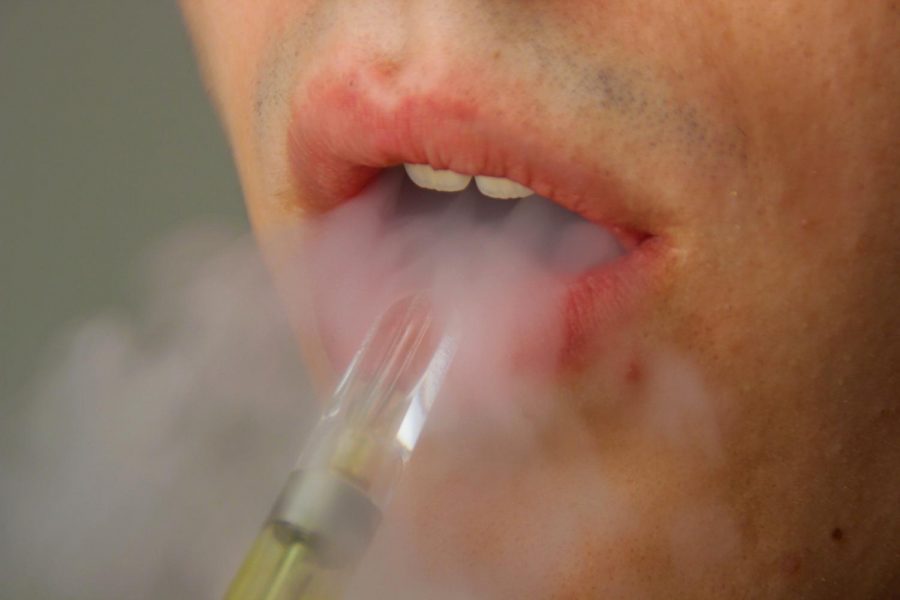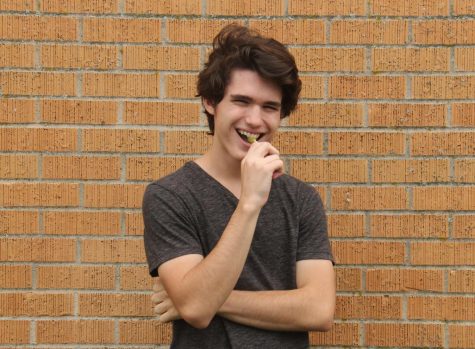New curriculum, conversations address vaping ‘epidemic’
Vaping remains popular among students even as officials are sounding the alarm. Additional health risks are posed by an outbreak associated with vaping.
October 28, 2019
As the death toll climbs, vaping faces increased scrutiny by a school district hoping to curtail its impact.
According to the Center for Disease Control, more than 1,000 people have experienced vaping-associated respiratory illness. In 29 of those cases, including two in Kansas, the illness resulted in death.
Ongoing investigation by the CDC has been accompanied by increasingly vocal calls for regulation at the state and national levels. It has also prompted USD 497 to tackle the problem in Lawrence.
According to Lawrence-Douglas County health promotion specialist Sarah Hartsig, national e-cigarette use jumped 78 percent from 2017 to 2018. Hartsig addressed the school board on Sept. 9 to discuss what risks this posed to Lawrence students.
“The frequency of teens vaping is really skyrocketing now,” Hartsig said. “Because it’s so new, we don’t know all the long term effects… but we know enough to be very concerned.”
Although there is a relative lack of local data, district health and wellness director Denise Johnson says there were 12 vaping incidents between the two high schools in only the first two weeks of school.
Several board members expressed their support for the Tobacco 21 Initiative, which raises the minimum age to purchase tobacco products to 21, in an effort to prevent teen vaping.
“As we are finding out about this epidemic, the resources have definitely lagged,” Johnson said.
Discussions of implementing vaping detectors in restrooms and finding ways to better gather local data on vaping were also a part of the ongoing discussion by the school board.
Although much of the discussion was centered on nicotine vaping products such as Juul, the CDC has discovered increasing evidence that illicit THC cartridges are another likely suspect behind respiratory illnesses.
These conversations have entered the classroom, where an updated freshman health curriculum addresses the relatively new phenomenon of vaping in the new textbook “Comprehensive Health.”
“While young people have been the victims of the harmful practice of tobacco and vape companies, they can also be part of the solution,” Hartsig said.
The textbook points out that, despite claims e-cigarettes are a healthier alternative to smoking, evidence points toward similar risks from vaping. That same claim has gotten Juul Labs in hot water with the Food and Drug Administration.
“The government has not approved e-cigarettes as a successful and safe form of smoking cessation,” the book reads. “Because of these risks, the use of e-cigarettes is opposed by the Food and Drug Administration, the American Cancer Society, and the American Heart Association.”
Hartsig also talked to Free State and Lawrence High health classes about the ways that the e-cigarette industry has purposefully targeted teens, who are especially prone to addiction from nicotine use. The Olathe School District is one of several across the nation that have filed lawsuits against Juul for their marketing practice.
Health teacher Adam Green said he was learning about the harmful effects of vaping alongside his students, but was skeptical whether students knowing the facts would actually stop them from vaping.
“The manufacturers of these products are insulting your intelligence if you think some research has to tell you it’s bad for you,” Green said.
Green believed having an expert helped engage students during the presentation.
“I think [the presentation] made a pretty good point,” freshman Maria Pollington said. “It did a great job sharing about the serious consequences vaping has.”
Although vaping isn’t a phenomena confined to Lawrence High, Green says it has become a problem that must be addressed by schools.
“We get dumped on a little bit to try and fix society’s ills,” Green said. “But that’s not our main job. Our job is to teach and have people learn. Now when that starts to affect the learning environment… that’s an issue.”
















